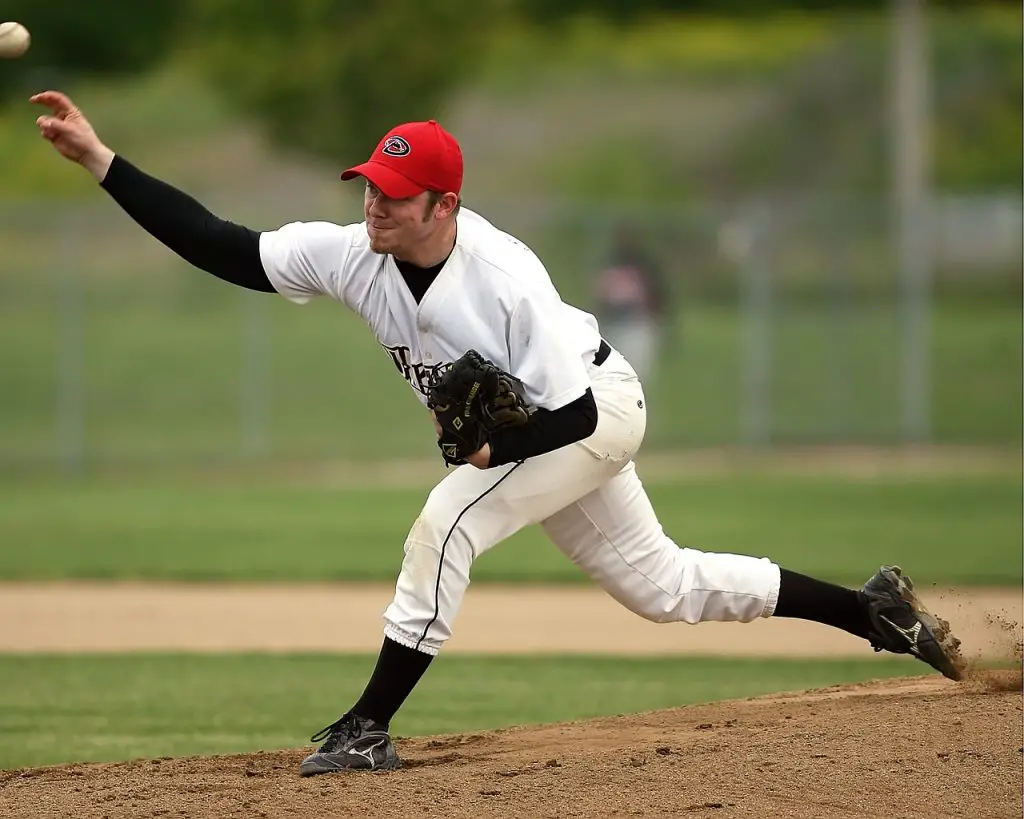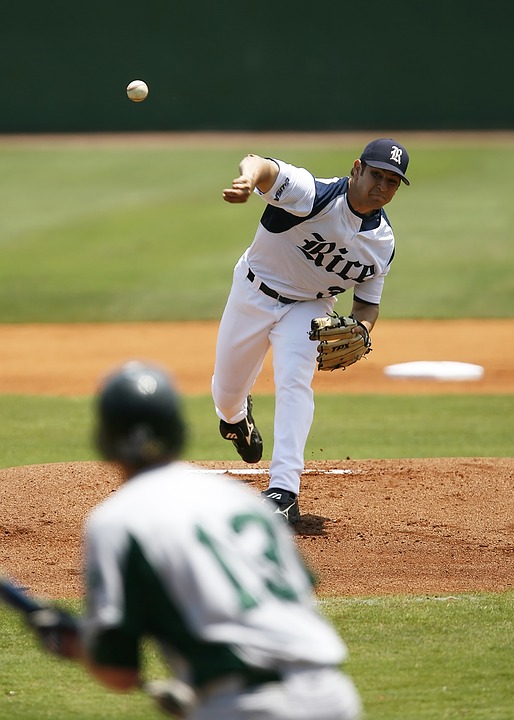
Velocity, velocity, velocity – as a baseball fanatic you’re bound to have heard sportscasters, coaches, professional ballplayers, and your peers talking about it at some point – and with good reason.
Over the last decade, average pitching velocities in the major and minor leagues have increased significantly re-shaping the way the game is played.
Now, velocity isn’t everything.
Without control and accuracy, it’s pretty worthless. What’s the point in being able to pitch a ball at 95 MPH if you can’t hit a strike?
An aspiring-elite pitcher needs to combine power with technique in order to throw consistently well and anyone who’s played the game at a high level will be able to tell you just how difficult this is.
For anyone looking to embark on a career in baseball, an accurate, high-velocity pitch can be the difference between playing college ball and making it as a first-round draft pick (or, just simply out-doing your peers :P).
It’s for this reason that so many people sign themselves and their kids up for online training programs and even specially designed summer camps to improve their pitching velocity.
Honestly, though, you don’t need to spend big bucks to improve your pitching velocity.
There’s a number of ways that you can rack up some extra MPH’s with a few targeted pitching drills and an individual training regime.
For sure, it takes time and dedication, but if you can motivate yourself, you’ll be surprised at just how much speed you can add to your fastball.
We’ve put together a list of ways to improve your pitching velocity to aid you in developing your own training routine.
Before we get into it though, it’s important to remember that everybody is different. We all have different body types as well as strengths and weaknesses so you need to tailor your training to suit you. While some may well increase their pitching velocity by 10 MPH some may see more or less improvement.
Now let’s take a look at the best ways to increase pitching velocity…
Improve Your Upper Body Strength To Increase Your Pitching Velocity
Power output is the most important factor when thinking about velocity. The more power your body can generate, the faster your throw will become.
This means that you’re going to have to build upper body strength.

Now, I’m not suggesting that you start hitting the weights for hours every day and come out of the gym looking like The Rock, but there are a few handy exercises that you can try.
These exercises are all relevant to baseball and specifically the muscle groups that you need to engage to pitch effectively. Let’s take a look:
Medicine Ball Wall Throws
![Baseball Conditioning Drills: Exercise diagram of someone doing rotational medicine ball throws [MindfuseBaseball.com]](https://mindfusebaseball.com/wp-content/uploads/2020/06/Rotational-Medicine-Ball-Throws.png)
This exercise is perfect for developing rotational power output. Make sure that you use a manageable weight to avoid injuring yourself.
We’ve got some medicine ball exercises on our condition drills guide you can check out here…
Kettlebell Exercises
Kettlebells are a great tool for pitchers to build the muscles used in throwing. They allow you to rotate naturally when lifting which reduces the risk of injury to the rotator cuff, that’s the muscles in and around your shoulder.
Again, remember to train with appropriate weight and don’t over-do it.
Lower Body Strength Exercises To Improve Your Pitching Velocity
Pitching involves so much more than just your arms and shoulders. A top-level pitcher also needs to use their lower body to generate velocity and this is no surprise given that the largest muscle groups in the body exist in our legs.
If you can regularly incorporate a range of squats and lunges into your training program, you’ll see results within a month or so. Check out the video above for an excellent lower body workout for pitchers.
Getting To The Core of Your Pitching Velocity Improvement…
So we’ve looked at ways to increase power output in the upper body and the legs. Now we need to think about the link between them.
Pitching involves a lot of rotating and winding at the hips and a strong core is key to this type of movement.
Ask any player pitching over 90 MPH and they’ll tell you just how important an actively engaged core is to a high velocity throw.
One of the most effective ways to increase core strength is through using resistance bands.
They’re affordable and portable so you can travel around with them and set them up wherever you feel the need to workout.
Mobility and Flexibility Have a Huge Impact on Velocity.
The next time you’re watching a ball game, pause it just as a pitcher is mid-way through his throw.
I guarantee you’ll be surprised at the position their body has frozen in.
You’ll see huge rotations at the hips and legs stretched incredibly wide. This is because the pro’s have trained their bodies to be super flexible.
Mobility and flexibility have a huge impact on velocity. The more freely you can open up your body, the more range you can get in your pitching motion. Believe it or not, this extra range can be the difference between a few MPH’s.
So, how do we increase our mobility and flexibility in relation to pitching?
Well, the core exercises mentioned above are a good way of improving mobility but also stretching works wonders.
Yoga and pilates are proven to help but you don’t necessarily have to break out the lycra and start attending classes. A few simple stretches every day can have a massive impact on your mobility.
The Forgotten Focus When Improving Pitching Velocity
(…and any other baseball technique for that matter)

When people talk about methods of increasing velocity, they often neglect the need to train actual pitching technique.
You’re constantly throwing over the course of a season and if you’re only focussing on generating power, you’re going to see a decline in accuracy and form.
Don’t be afraid to reduce your output every now and again in order to focus on control.
We recommend spending some time on training techniques alone at a reduced intensity. Use different weighted balls and try to focus on manipulating the flight of your pitch.
Play around with spin and different targets and when you feel comfortable add a bit more power.
A great way to do this is by training alone using some well-positioned pitching targets.
Remember – throwing the ball at full pelt time after time without adequate rest also raises the risk of injury, so don’t go overboard!
____
RECOMMENDED READING: Reduce the risk of injury with elbow guards and throwing sleeves.
____
The second you feel that your technique is going out the window, it’s a definite sign to take a rest. That brings me nicely onto the next point…
The ‘R&R Approach’: Using Off-Season To Your Advantage
When people talk about methods of increasing velocity, they often neglect the need to train actual pitching technique.
You’re constantly throwing over the course of a season and if you’re only focussing on generating power, you’re going to see a decline in accuracy and form.
Don’t be afraid to reduce your output every now and again in order to focus on control.
We recommend spending some time on training techniques alone at a reduced intensity. Use different weighted balls and try to focus on manipulating the flight of your pitch.
Play around with spin and different targets and when you feel comfortable add a bit more power.
Remember – throwing the ball at full pelt time after time without adequate rest also raises the risk of injury, so don’t go overboard!
The second you feel that your technique is going out the window, it’s a definite sign to take a rest – or ‘R & R’ it = rest and relaxation 🙂
That brings me nicely onto the next point…
Dial In The Diet: Sports Nutrition Tips for Baseball Pitchers
(…and every other baseball player, of course.)
Constantly throwing at high velocity can have long-term implications on your muscles if you’re not looking after them.
Every time you throw a fastball, you’re making tiny tears in your muscles and they require the right fuel to help them repair.
Make sure that you get plenty of protein and a good amount of carbohydrates for energy. Avoid too many fatty foods to stay lean and stay hydrated.
Increasing Your Pitching Velocity by 10MPH: Final Thoughts
Like I mentioned at the start of this guide – everyone’s different.
Nothing’s guaranteed. Yes, you may increase your pitching velocity by 10mph – but that all depends on a large amount varrying factors.
Your; genes, level you’re at now, your internal potential, training structure and regime, psychological development, size and the time you’re willing to put into perfecting your craft.
But it’s important to remember while velocity is so important to pitching (an undeniable fact)…
Velocity means nothing without control and technique. So, it’s all about finding the right balance.
Achieving a consistently fast and accurate throw isn’t easy. For someone who’s never played baseball before it probably seems simple – it’s just throwing a ball, right?
Wrong.
To be a successful pitcher you need to be disciplined and train effectively.
Use these tips wisely, work hard and you’re bound to see results.
Always make sure that you’re training correctly to avoid getting hurt and most importantly, have fun and crush some baseballs.